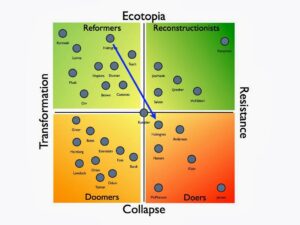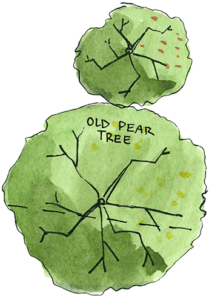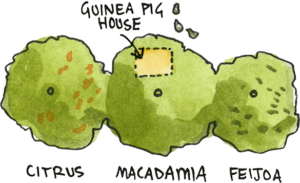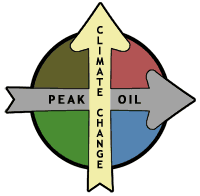
Bushfire rages in NSW and a state of emergency is declared.
Are these fires unprecedented? Possibly so this early in the season.
Do these fires reflect human induced climate change so far? Almost certainly.
Were the weather conditions particularly bad? Not so far, compared with Black Saturday in Vic.
Would a massively expanded burning program have prevented house loss? Maybe, but with costs and side effects; including more accidental fire damage to property
Does the number of houses burnt reflect ferocity of the fires? Not particularly.
What does it reflect? The terrible landscape position of most housing on ridge tops above steep slopes and the extremely high flammability of Blue Mountains vegetation growing in a high rainfall, but very infertile, region.
Is there anything that can be done by the householder from a permaculture perspective?
Lots. Most importantly, unattended houses were between 3 and 8 time more likely to burn than attended (Blanchi & Leonard Bushfire CRC)
In other words, residents who stay and defend, have a high chance of saving a house (and a very high chance of survival even if the house burns because almost all houses burn after the fire front has passed).
The picture above (from ABC website) is one of the many houses burnt during the recent fire showing the relatively unscarred native vegetation around the remains after a very hot house (rather than bush) fire.
Bushfires do not in general demolish houses. Instead they create an ember storm that accumulates around the house and most importantly enters the roof space leading to ignition and intense fire in undefended houses (mostly after the fire front has passed).
Here are some of the resources on our website for building up bushfire resilience for both your house and community at large.
From our online shop, the following publications have ample information on the subject.
The Flywire House:A case study in design against bushfire (1983)
Melliodora: A case study in cool climate permaculture
The Complete Bushfire Safety Book by Joan Webster
The Essential Bushfire Safety Tips by Joan Webster
The following resources may also be of your interest.
Bushfire Resilient Communities and Landscapes (report 2009)
Bushfire Resilient Communities and Landscapes (presentation in the Blue Mountains 2011)





















4 thoughts on “Bushfire from a permaculture perspective”
Thanks David. Joan Webster’s Essential Bushfire Safety Tips is a good one too for people that want a quick overview of strategies too.
Thanks Adam, we forgot to mention that we do have that excellent summary for sale. Joan at over 70 is still at it, with a letter to the local paper pointing out factually wrong information in CFA literature about houses not being suitable shelters on Code Red days.
Thank you David. I was reminded a day or two ago of your presentation at Lawson in 2011 – it made then and still makes such good sense. A few months ago I left Blacklheath to live in northern Lake Macquarie for family reasons and have been watching and listening to the Blue Mtns fire reports with mostly exasperation especially when I hear of and see householders clearing gutters at the last moment and then fleeing when embers approach – exactly the time (properly clad) in my experience to saturate your house, water permitting of course, and douse each ember before it gets a hold. If you don’t mind I’d like to ring ABC radio and ask if they will interview you. Unlike some in higher places I think this is exactly the time to talk about what’s happening and all that can be done to best cope bushfire.
Very best wishes to you and Su.
Joan Webster informed us that a review of her Essential Bushfire Safety Tips appear in the US Natural Hazards Observer (nov 2013).
“Webster’s book explains step-by-step how to plan to defend one’s home, or how to decide to leave and when to make that decision. Though it is written for Australia, its lessons are universal.”
http://www.colorado.edu/hazards/o/archives/2013/nov13_observerweb.pdf